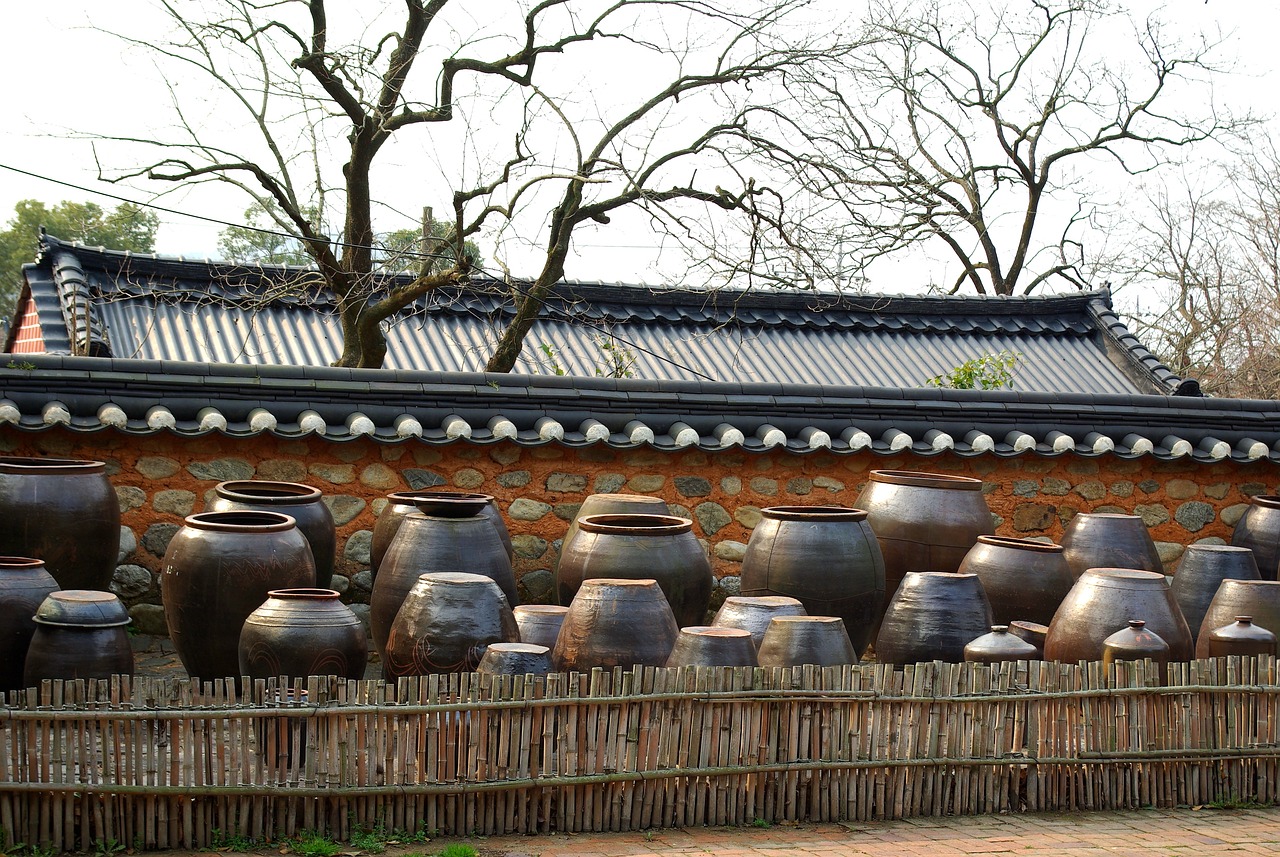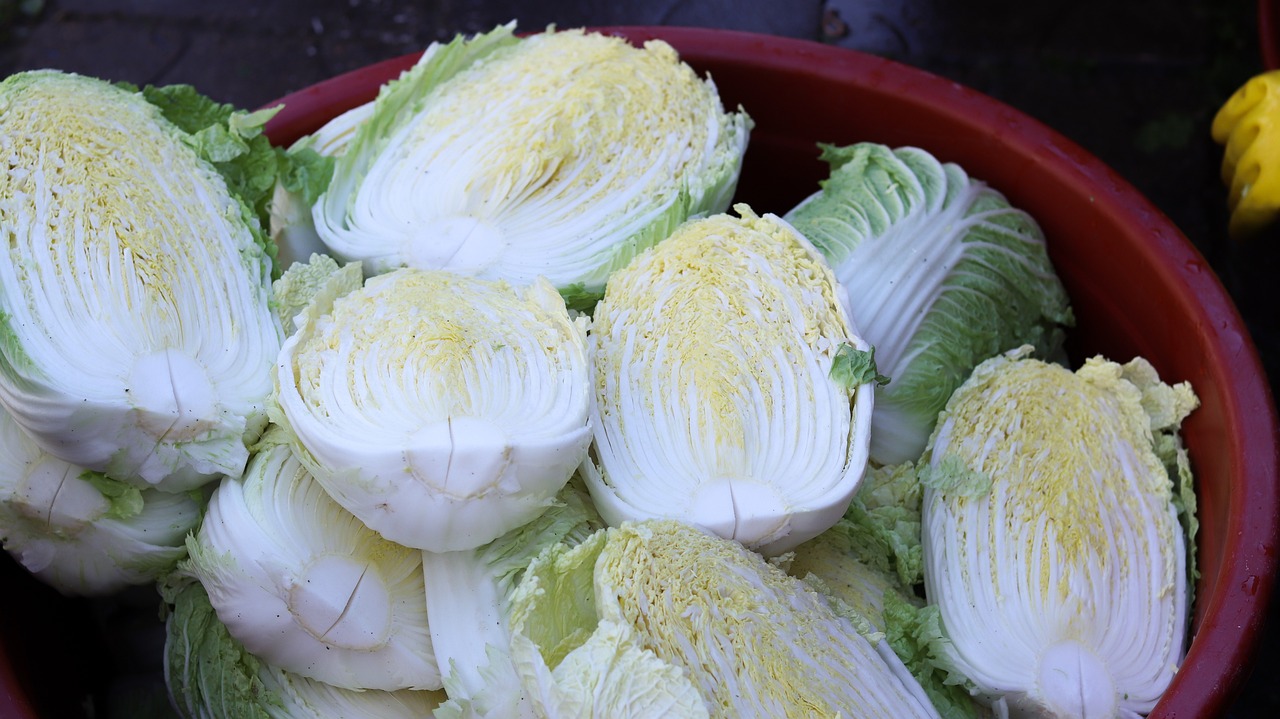Kimchi Recipe: Traditional Pickled Vegetables from Korean Cuisine

Kimchi, a beloved staple in Korean cuisine, is a traditional pickled vegetable dish that packs a punch of flavor and nutrition. This iconic dish is a perfect blend of spicy and tangy, offering a unique taste experience that has captivated taste buds worldwide. The process of making kimchi involves a careful balance of ingredients and fermentation techniques that have been passed down through generations.
Ingredients and Preparation
When it comes to making traditional kimchi, the key lies in selecting the right ingredients and following a meticulous preparation process. The star of the show is the Napa cabbage, a staple in Korean cuisine that forms the base of this iconic dish. Alongside the cabbage, Korean radish, known for its crunchy texture, plays a crucial role in adding depth to the flavor profile of kimchi. The combination of these two main ingredients sets the foundation for a delightful culinary experience.
To infuse the kimchi with its signature spicy kick and vibrant color, a blend of garlic, ginger, and gochugaru is essential. Garlic brings its pungent aroma and distinct taste, while ginger adds a hint of warmth and earthiness. Gochugaru, a type of Korean chili powder, not only provides the characteristic heat but also contributes to the rich red hue that is synonymous with kimchi. The careful balance of these seasonings is what gives kimchi its unique and addictive taste.
Preparing kimchi is a labor of love that involves a series of steps to ensure the vegetables are properly seasoned and fermented. The cabbage and radish are first soaked in a brine solution to enhance their crunchiness and remove any bitterness. After rinsing and draining the vegetables, they are coated with a paste made from the garlic, ginger, and gochugaru mixture. This step is crucial as it imparts the intense flavors that will develop during the fermentation process.
Once the vegetables are thoroughly coated, they are packed tightly into a container, ensuring they are submerged in their own juices to kickstart the fermentation. This is where the magic happens as the natural sugars in the vegetables transform into tangy and complex flavors over time. Fermentation can take anywhere from a few days to several weeks, depending on the desired level of sourness and intensity of flavor.
As the kimchi ferments, it develops its characteristic umami taste and becomes rich in probiotics, which are beneficial for gut health. The probiotic-rich nature of kimchi not only adds to its unique flavor profile but also contributes to its reputation as a health-promoting food. With each crunchy and tangy bite, you not only savor the explosion of flavors but also nourish your body with beneficial microorganisms.
Variations and Serving Suggestions
When it comes to kimchi, the variations are as diverse as they are delicious. From the traditional Napa cabbage kimchi to the refreshing cucumber kimchi, there is a type of kimchi to suit every palate. Each variation offers a unique flavor profile and texture, adding a burst of excitement to any meal. Whether you prefer the classic spicy kick of the original kimchi or the milder taste of radish kimchi, the options are endless.
One popular variation is cucumber kimchi, known for its crisp texture and refreshing taste. Made with fresh cucumbers, this kimchi is a perfect choice for those looking for a lighter and milder version of the traditional dish. The combination of crunchy cucumbers and tangy kimchi seasoning creates a delightful balance of flavors that is sure to please.
Radish kimchi, on the other hand, offers a unique twist on the classic recipe. Made with Korean radishes, this variation is known for its slightly sweet and peppery flavor. The radishes absorb the spicy kimchi seasoning, resulting in a mouthwatering dish that adds a pop of color and flavor to any meal.
When it comes to serving kimchi, the possibilities are endless. Enjoy it as a side dish alongside steamed rice and grilled meats, or incorporate it into your favorite Korean dishes for an extra burst of flavor. Kimchi can also be used to add a spicy kick to sandwiches, salads, and even tacos.
For a complete dining experience, consider pairing kimchi with other Korean delicacies such as bulgogi, bibimbap, or japchae. The combination of savory, sweet, and spicy flavors creates a harmonious balance that is sure to tantalize your taste buds. Whether you're a kimchi connoisseur or trying it for the first time, exploring the various serving suggestions will elevate your culinary experience to new heights.
Health Benefits and Cultural Significance
When it comes to kimchi, its benefits extend far beyond just being a tasty side dish. Let's dive into the health benefits and cultural significance of this beloved Korean staple. First and foremost, kimchi is a powerhouse of probiotics, the good bacteria that promote a healthy gut flora. This fermented dish aids in digestion and can contribute to a robust immune system. The natural fermentation process not only enhances the flavor but also boosts the nutritional value of the vegetables used.
Moreover, kimchi is deeply rooted in Korean culture and holds significant symbolism in various aspects of life. In Korean households, making kimchi is a ritual that brings families together, often passed down through generations. This culinary tradition is celebrated during special occasions and festivals, signifying unity and prosperity.
Kimchi's cultural significance goes beyond the dining table. It has become a symbol of Korean identity, representing the country's heritage and resilience. The distinct flavors and preparation methods of kimchi reflect the rich history and ingenuity of Korean cuisine.
When you enjoy a serving of kimchi, you're not just savoring a delicious dish; you're also partaking in a culinary journey that spans centuries. The fusion of flavors and the traditions embodied in each bite make kimchi not just a food but a cultural experience that connects people to their roots.



 HazalVardal
HazalVardal 





